A multinational fleet of warships is assembling in the Firth of Clyde this Thursday morning as preparations intensify for Formidable Shield 2025, one of NATO’s most complex and strategically important missile defence exercises.
The exercise, which will run from 5 to 22 May, is centred on the UK’s Hebrides Range and surrounding air and sea space off Scotland’s northwest coast.
Among the vessels making their approach are warships from the Royal Navy, French Navy, and Italian Navy, including advanced air defence and patrol platforms. The build-up marks the start of a month-long deployment that will bring together more than a dozen allied and partner nations. Participants will contribute over 20 naval vessels, 30 aircraft, and multiple land-based missile defence systems for a series of integrated drills.
Live-fire events during the exercise will test responses to a wide range of aerial threats, including subsonic and supersonic missiles, as well as ballistic targets. The exercise will also involve high-energy manoeuvres, unmanned aerial systems, and the coordination of naval, air, and land-based assets across vast distances and operational domains.
Very misty conditions on the Clyde this morning for inbound HMS Dragon.@HMSDragon @royalnavy #naval #shipping #firthofclyde pic.twitter.com/S8WNCQOjay
— Sheila Weir (@SheilaLWeir) May 1, 2025
In support of these activities, the Ministry of Defence has established a complex of Temporary Danger Areas (TDAs) west of the Outer Hebrides, activated by Notice to Airmen (NOTAM).
These restricted zones span altitudes from the surface to flight levels beyond 500, with specific airspace closures planned throughout the month. One of the primary areas, EGD1FS25, is set to be active during key windows next week and will encompass a significant section of the North Atlantic.
The event, which occurs every two years, is designed to validate NATO’s integrated air and missile defence systems, improve interoperability among allies, and reinforce the alliance’s deterrence posture. Forces involved will conduct coordinated missions involving modern fighter aircraft, surveillance platforms, and advanced missile systems such as HIMARS and NASAMS, demonstrating a unified response to high-end threats.
— Sheila Weir (@SheilaLWeir) May 1, 2025




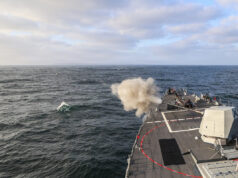
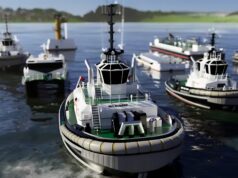

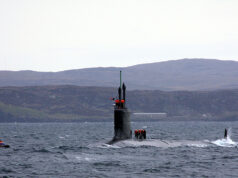
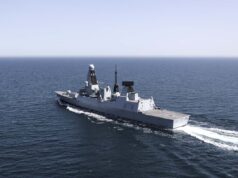

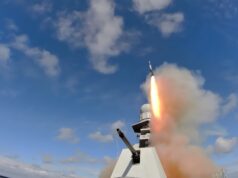
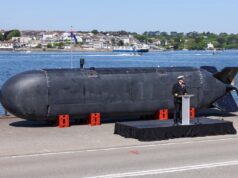
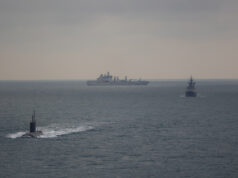

This goes to show the ability and flexibility of the UK’s armed forces. An entire CSG off around the World and a massive exercise in the north.
Question for all the regulars here, Is it OK to comment as I seem to be attracting a few disgruntled people ?
“Sow the wind, reap the whirlwind”.
have we got any left? ofr have they been given away to zelenskys bunch?
What? Naval missiles, or AAW destroyers? Last time I looked, we hadn’t given Ukraine either, in their fight against Russian imperialism.
Zelensky’s bunch? Bit negative? Ukraine (defending it’s freedom and democracy from a dictatorship) – sounds better to me.
I don’t think we could ever have enough in the way of air defences. Currently a dozen squadrons of Spitfires would help any country defend against swarms of slow drones. We need much kit for varying types of threat.
Hmm, I’m thinking perhaps the Mossie or Hornet would be a better platform for taking out drones. The Mossie did very well at taking out V1s during WW2 in flight. As it had all of its guns centralized, making it easier to group shots on small targets, like a modern day Shahed type of drone. Would the later Hornet be the better platform for this requirement?
If some off the shelf commercial avionics were used. Which includes an X-band/Ku-band AESA radar, laser range finder/designator and Electro-optical IR camera, aligned with a pilots helmet mounted display. The aircraft could then search for and hunt out targets night and day. A pair of Merlins would sound awesome, but there’s better options from Rolls Royce. Such as a pair of AE2100s detuned down to 3600shp and fitted with the Dowty Scimitar propellor blades.
We can move on from the wooden sandwich composite, instead use a combination of carbon fibre mouldings and honeycomb sandwiches to replace the wooden ribs and spars, covered in a carbon fibre skin. This wouldn’t give the aircraft radar transparency as per the wooden Mossie and Hornet (Let’s put this to bed, the Mossie was not stealthy! Radio waves passed through the wooden skin, then were reflected off control rods, engines, bombs etc. Which did have the affect of reducing its radar cross section compared to other metal skinned aircraft of the period). The carbon fibre would offer a much reduced radar cross section, as its not a great radar reflector to most radar frequencies. Using mouldings, 3D printing and a large autoclave, would also speed up manufacture, compared to De Haviland’s wooden construction processes.
Trying to find the 20mm Hispanos might be a problem! So we could look at replacing the four pack with a pair of 25/30 Bushmasters, 25/30 Oerlikons or 27mm Rheinmetalls, backed up with a pair of 50 cals. The other option would be using the CTAS 40, if the Mossie could successfully fire the 6 pounder (57mm) anti-tank gun. The CTAS should be fairly comparable. Which would give the aircraft a very significant punch, that could also include programmable air burst rounds. Thereby increasing the chances of gaining a kill with a reduced number of required shots. If the aircraft was also armed with advance precision kill weapon system (APKWS) 70mm guided rockets. Which when designated by the laser, would allow the aircraft to take out targets from much further away.
There is a risk of redesigning the original airframe and wing to bring it up to modern standards. Such as moving the wing back to change the centre of gravity and give it tricycle undercarriage, giving it a much more modern wing profile and other aerodynamic tweeks. But in the terms of expediency, I’d keep to the original tail dragger and wing profile. Back in the day, the Hornet was good for cruising at 400mph and could reach a top speed of 475mph, powered by two 2000hp Merlins. It’s likely that the AE2100s are too powerful, but it would allow the cruise speed to be raised substantially, especially when paired with the Dowty props. Plus the AE2100s will be a lot more fuel efficient. So the Hornet with its already impressive 1500 mile range, will increase this further. Though unlike the original Hornet, this aircraft will definitely need power assisted controls due to the increased speeds, where its likely going to be over 500mph. It could probably do with a flight control computer to prevent the pilot from “over flying” the aircraft!
I fully admit that this is purely fantasy. But I do wonder if there is a market for a relatively cheap and uncomplicated aircraft, that could be used for intercepting drones? Looking at the historical Hornet, it had the speed, range and punch that today’s drone interceptor would require. Perhaps I should look at crowdfunding this project and give the President of Ukraine a call?
The powers will make sure there will nice calm ..clear skies … guaranteed….then when their games are finished Scotland will have it’s sun block on once again denying it’s people natural Vitamin D
nice calm ..clear skies … guaranteed….then when their games are finished Scotland will have it’s sun block on once again denying it’s people natural Vitamin D
I think we have only given Ukraine some mine hunters.